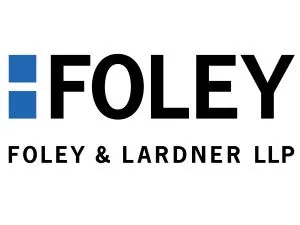- within Criminal Law, Government, Public Sector and Tax topic(s)
One advantage of being a blogger in the relatively small world of patents is that I have gotten to know practitioners in other countries who also have a keen interest in patent law. One such person is Australian Registered Patent Attorney Mark Summerfield, who blogs at Patentology. I enjoyed his article on the new USPTO 101 Guidelines, and that led to a discussion where he raised the question whether the Guidelines violate international trade agreements. He agreed that I could share his comments here, and I do so to spark further consideration, discussion, and public comments challenging the Guidelines.
International Concerns
One thing some of us are wondering down-under is whether the USPTO interpretation of the Myriad decision, if correct, places the United States in breach of its obligations under various international agreements, such as Chapter 17 of the Australia-US Free Trade Agreement (AUSFTA). The US is generally very quick to criticise trading partners for any perceived weaking of IP protections!
Article 17.9(1) of the AUSFTA clearly states that "[e]ach Party shall make patents available for any invention, whether a product or process, in all fields of technology, provided that the invention is new, involves an inventive step, and is capable of industrial application. The Parties confirm that patents shall be availablte for any new uses or methods of using a known product."
Article 17.9(2) provides that each Party may only exclude from patentability '(a) inventions, the prevention within their territory of the commercial exploitation of which is necessary to protect ordre public or morality, including to protect human, animal, or plant life or health or to avoid serious prejudice to the environment, provided that such exclusion is not made merely because the exploitation is prohibited by law; and (b) diagnostic, therapeutic, and surgical methods for the treatment of humans and animals."
Excluding genomic DNA is no doubt arguably covered under (a), while the outcome in Mayo clearly falls within (b). But if new and useful combinations, uses and methods of using natural products are generally excluded under 35 USC §101, as the USPTO has concluded, it is difficult to see how this is consistent with the obligations of the U.S. under Article 17.9(1) of the AUSFTA.
I find Mark's comments in this last paragraph interesting because while some countries have excluded specific subject matter from patent eligibility on these grounds, the Supreme Court did not invoke principles of "public order" or "morality" to reach its decision in Myriad, and did not base its decision in Mayo on any general principle that diagnostic methods cannot be patented.
So, do the new USPTO 101 Guidelines violate international agreements?
Undermining International Harmonization
When Myriad was pending at the Supreme Court, I explained that a decision against patent-eligibility would set the U.S. apart from most other countries that do permit the patenting of "isolated" DNA. The new USPTO 101 Guidelines go far beyond Myriad, and set the U.S. apart from virtually every country with its new "structurally different test" for patent eligible compositions of matter. It is ironic that the USPTO is working with other national patent offices to promote "global patent harmonization" (as announced in this April 3 press release) while at the same time taking one giant step backwards from the rest of the world on the fundamental question of patent eligibility.
The content of this article is intended to provide a general guide to the subject matter. Specialist advice should be sought about your specific circumstances.


